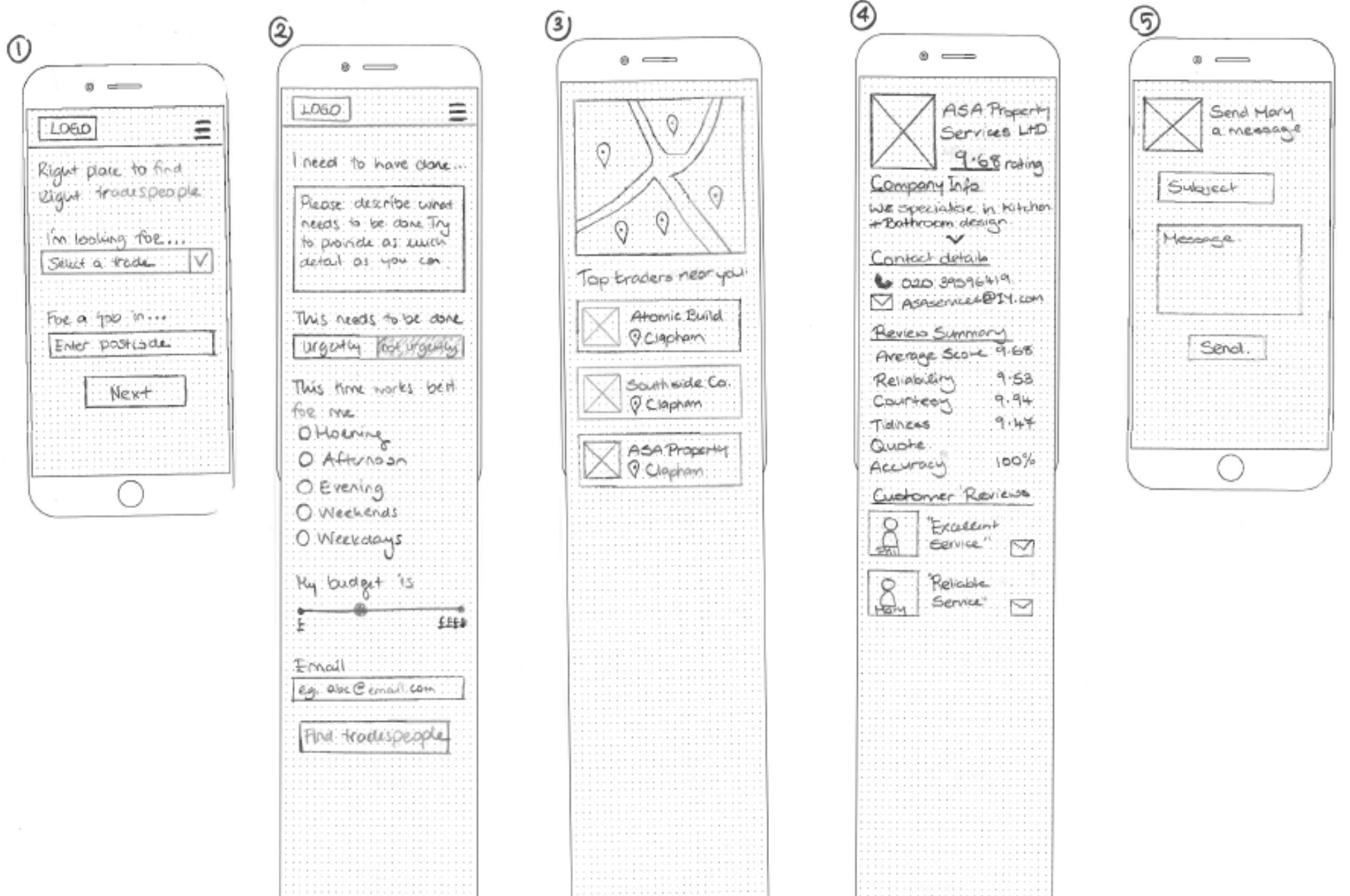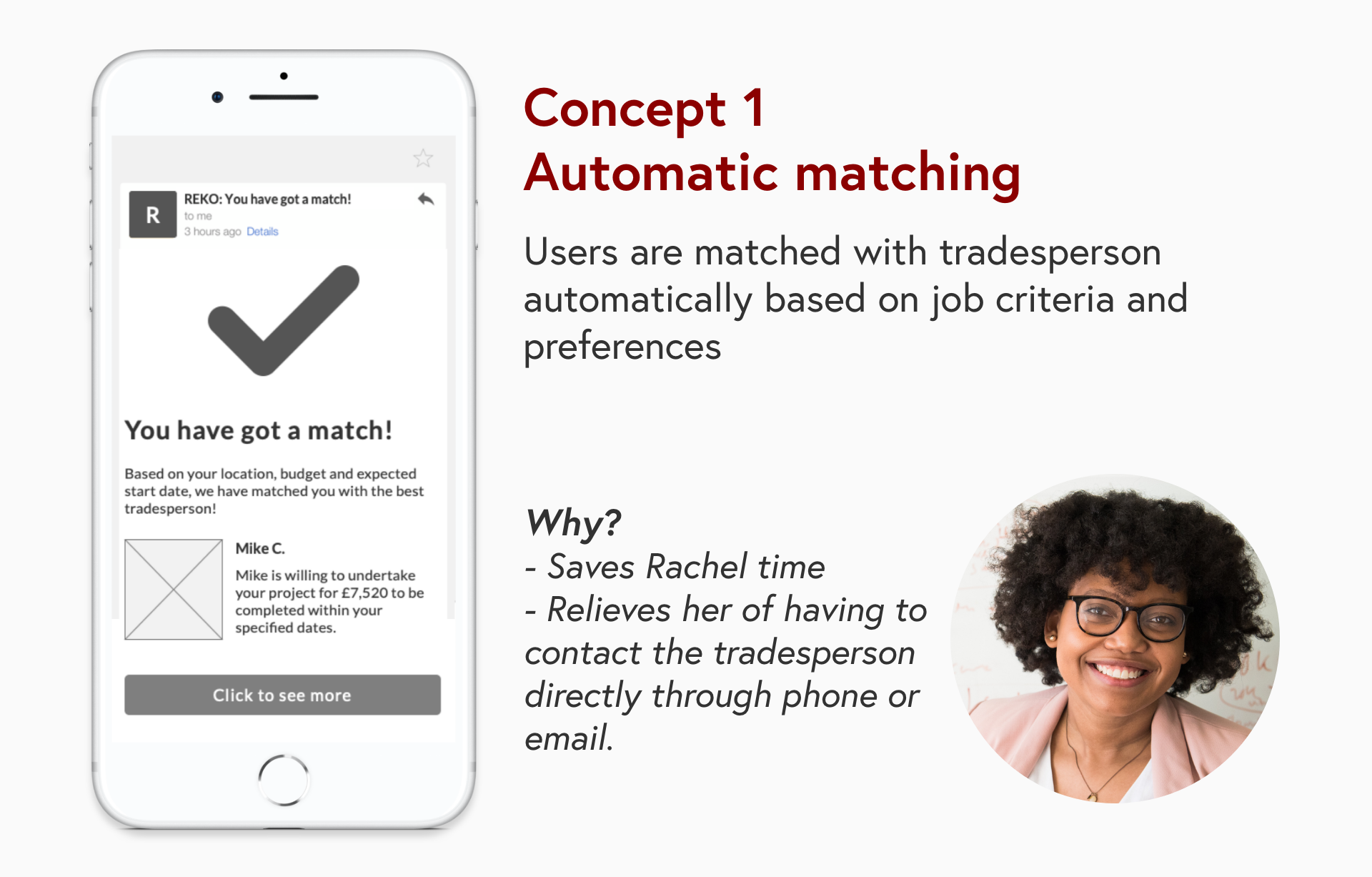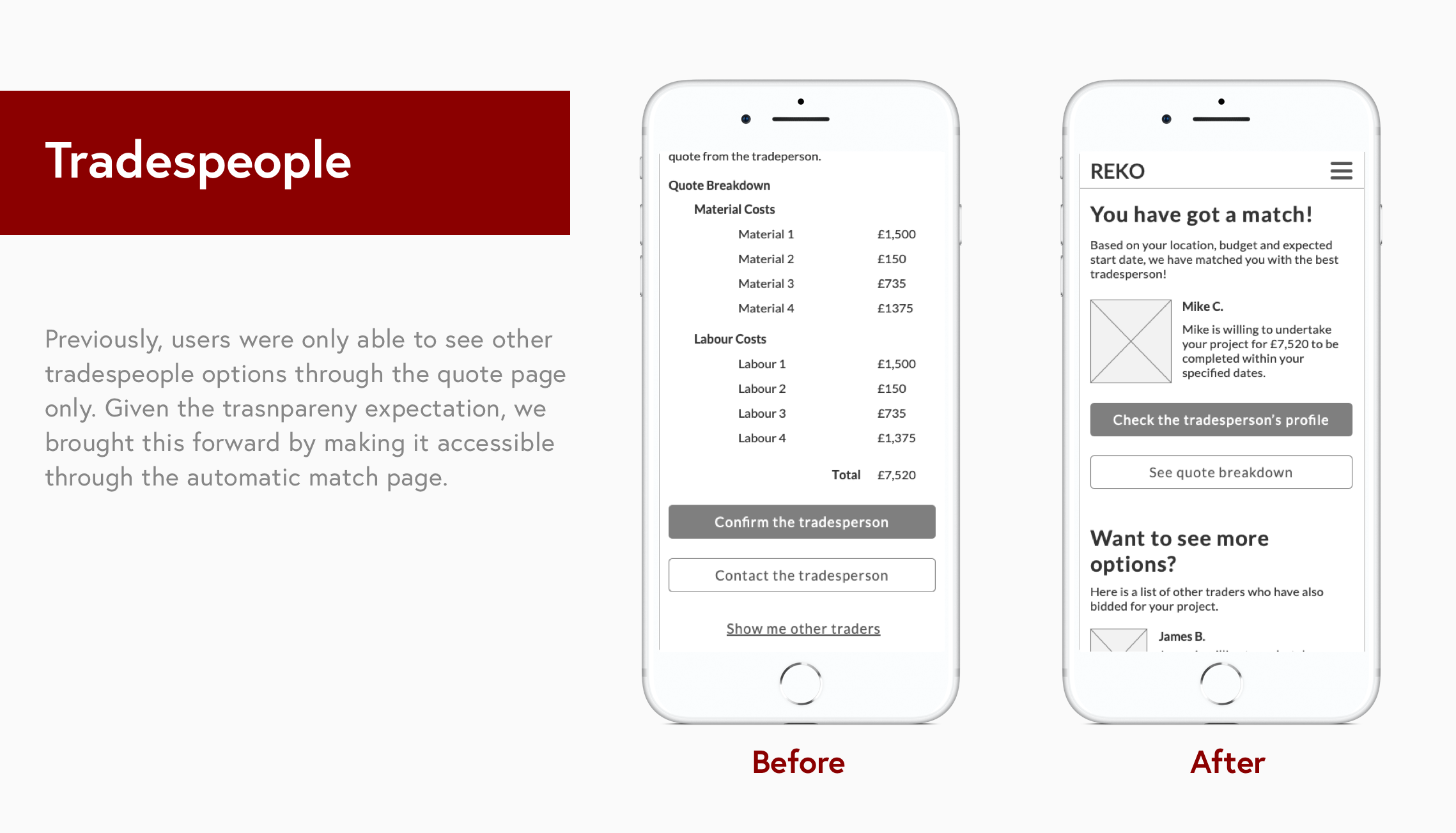
Tradespeople website
An attempt to connect millennial homeowners and renters with trusted and affordable tradespeople

Project overview
Designing a web-based product that could help millennial homeowners and renters access trustworthy and affordable tradespeople
Project Duration - 5 weeks (one-week sprints)
My Role - UX Designer
Tools - Pen and paper, Axure RP 9, Sketch
Key deliverables - User research (domain research, competitive analysis, user interview, user survey), persona, problem statement, sketches, site map, low-fidelity wireframes, mid-fidelity wireframes and clickable prototype, usability testing, annotated wireframes

Brief
Our team was tasked to design a web based platform that connects people with local tradespeople. It was reported that the current challenges faced by millennials include struggle to find reliable and affordable tradespeople, and lack of knowledge and skills in DIY resulting in frustration.
Domain research and competitive analysis findings
As a starting point we wanted to implement a design strategy that helped us assess what we were designing and why - two essential questions to be asked for before how it should be executed. As part of this, we deployed quantitative and qualitative research methodologies to understand all aspects of our audience, competition and the market. Having dived in the home improvements marketplace, and conducted a domain research alongside a competitive analysis provided us with the following insights, please click on the image below to flick through different findings.
User interview findings
We also spoke to a list of real users to find out what they really think and value. With this, we wanted to understand their thought process when undertaking home improvements, their needs and desires together with frustrations from current/past experiences. In order to achieve this, we interviewed 10 users accompanied by a survey with almost 100 participants. With this,
We found that majority of our users were homeowners (8 out of 10 user interviews and 73% of the survey participants).
When it comes to DIY, they feel comfortable doing small works like putting up shelves, changing light bulbs.
Affordability and reliability are the most important factors in the their decision making.
They want to receive a certain level of quality and the best value for their money.
When needed help or looking to plan for their home improvements;
Renters tend to go through their landlords
Word of mouth appears is their top preference when planning for home improvements, searching for tradespeople or looking for advice which also validates our findings from domain research.
Some also complete online searches too, but it’s merely to identify the marketplace
Identify the marketplace (reviewing tradespeople, checking the quality of builders out there)
Compare prices
Find inspiration for home improvements.
They don’t think it’s a smooth process.
They get frustrated because scope of the work changes and this results in incremental costs and timeline shifts.
They don’t feel tradespeople pay enough attention to details and show commitment.
They are not sure if ratings and reviews on current service provider’s websites are reliable.
They think there is not enough flexibility with payment options.
Once we gathered all of these insights, we then boiled those into our persona - Rachel Jotta, a 32-year old teacher who is willing to have some improvements done in her bathroom, but unsure how to find reliable and trustworthy people, and worried it going over budget.

You can view Rachel’s empathy map here.
As a budget-conscious homeowner, we identified the problem we should try to solve for Rachel as she needs a trusted way to access reliable and affordable tradespeople because she want to undertake her home improvements in an efficient manner to avoid any bad experiences.
Ideation
With her in mind and utilising a few ideation methods, we sketched with a number of concepts to try and address her problem discovered in our user research. We started with pen and paper, and moved to mid-fidelity wireframes from there. This round of iteration allowed us to explore ideas individually, refine paper wireframes into narrowed down mid-fidelity concepts.
Paper sketches
Mid-fidelity screens
We wanted our proposed solution to make information quickly and easily accessible by all and to create a seamless end-to-end booking process for homeowners that are looking to undertake home improvements. We tried to achieve this by;
Providing upfront prices guides that help them make informed decision
Saving time with automatic matching while keeping the process fully transparent
Building trust through a thorough profile page where users can also contact previous customers
Usability testing
To get this question answered, we employed a usability testing where we asked 9 homeowners to complete 6 different tasks using our mid-fidelity clickable prototype. Some of the feedback we received was;
Overall, majority of the users appreciated the time and energy they would save with the match.

However, they also felt that the platform was missing a level of transparency as they wanted to make sure the automatic matching was in fact the perfect option for them.

They felt that the interactive layout was helpful, but expected to see more detail about the project when they clicked into the area and not just the renovation overarching cost.


Iterated wireframes
Building on the feedback from our users, we further improved our design to ensure we solve Rachel’s problem when undertaking home improvements. Click here to view the prototype video walkthrough.

















